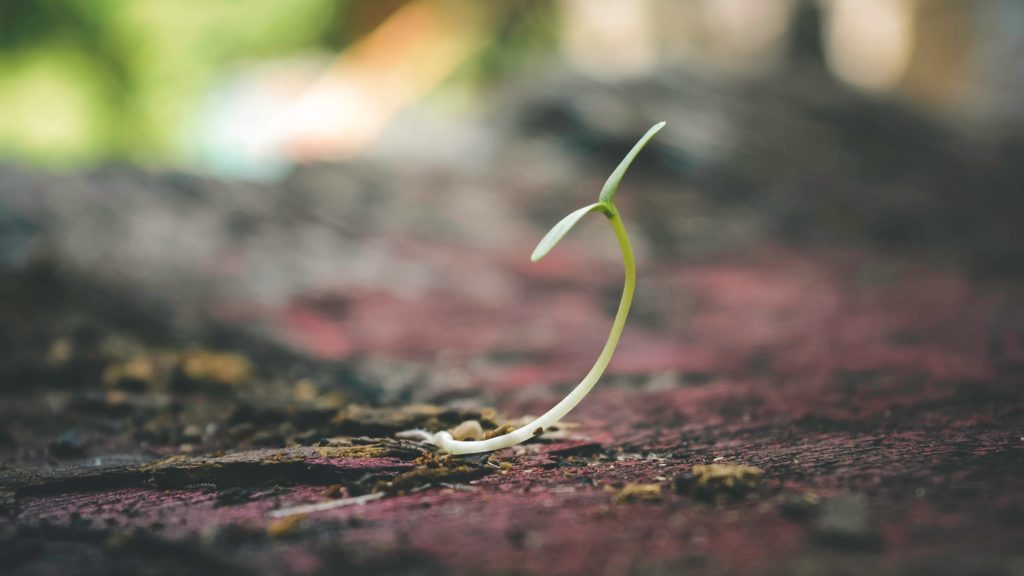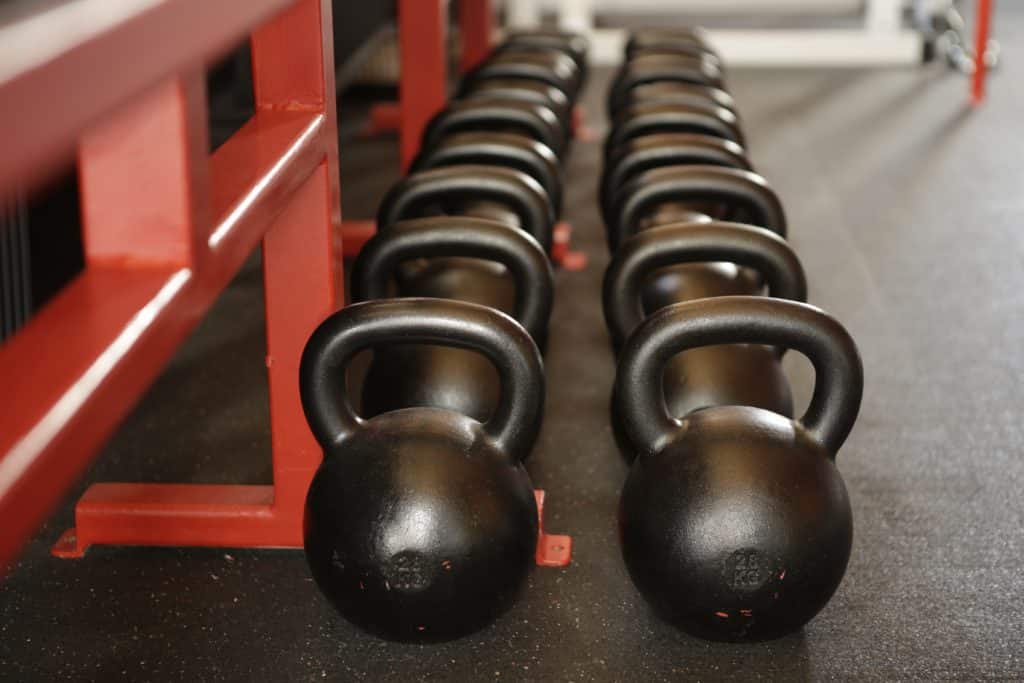Habits Are Like Trees
Your 20s are a pivotal decade for habit formation. It is a decade of beginnings. As you launch a vocation, a marriage, and a family, you are making decisions and, knowingly or unknowingly, forming habits.
JC Ryle, in his book “Thoughts for Young Men”, quips:
“Habits are like stones rolling down hill — the further they roll, the faster and more ungovernable is their course. Habits, like trees, are strengthened by age. A boy may bend an oak when it is a sapling — a hundred man cannot root it up, when it is a full grown tree”.

A lot of men “let themselves go” in their 20s. They no longer play team sports, no longer have strict training schedules, and with their compounding number of responsibilities, exercise goes to the wayside. As a result, about 40% of American men from 20-39 are obese. In the prime of their lives, men neglect their strength and form habits that become harder and harder to break.
For Christian men, we need to regain an understanding of the absolute gift that strength is. Strength is a blessing from God, and it needs to be stewarded well for His glory. Don’t waste your strength in your 20s. Learn to steward it.
I recently turned 30, and here are 20 reflections from my 20s, organized into principles (1-5), skills (6-15), and challenges (16-20).
Principles (1-5)
The first section details some of the main biblical exercise principles to learn in your 20s.

1. Realize your physical strength is a glory
Your strength, as a young man, is a glory.
“The glory of young men is their strength, but the splendor of old men is their gray hair” (Proverbs 20:29)
Strength is not something to be ashamed of, it’s not something to neglect, it’s not something to hide, and it’s not something to be treated as inherently wicked. Strength is a gifted glory, from God to you. And you should worship God as a result of receiving something so potently useful.
Glory in Proverbs 20:29 is not referring to a boastful arrogance or some wicked pursuit of taking God’s glory. The glory in this proverb is referring to a splendorous and adorning attribute.
What splendor adorns young men? What is their renown? Or, in this verse’s context, what honorable attribute distinguishes them from older men?
It’s young men’s strength.
Of course, this verse is not just speaking to physical strength. It encompasses young men’s zeal, fervor, and spirit (1 John 2:13-14). But don’t over-spiritualize this proverb to the point where physical strength is not an application. All of their strength, physical too, is a glory of young men.
2. Realize that you are stewarding your body and strength for God
God is your Creator. He was the one who formed and fashioned you (Psalm 139), and the one who gifted you with strength as a glory. This means that your body and strength do not ultimately belong to you, but they belong to God.
This makes you a steward of your body and your strength. You will give an account to God for how you lived (Hebrews 4:13), and we are commanded to use our strength to love God (Luke 10:27).
3. Realize that your strength is to be used for God and others
Strength can be an immense blessing. We can use it to love God (Luke 10:27). We can use it to build physical structures. We can use it to defend and protect our families. We can use it to play with our children. Strength is a vehicle to be used for God and His purposes in the world, and for the love of others in your life.
Put another way, if strength is the glory of a young man, then the glory of strength is when strength is used to love God and love others.
4. Realize that your strength can be wasted
Strength can also be an immense curse. It can cause physical harm and damage to others. It can tear down walls and break down communities. It can be used to take advantage of others and prey on the defenseless.
Strength can also be used for only yourself. It can turn a man inward, self-focused, and self-glorying. Strength can make you swoll, but it might make you swoll with conceit.
Strength can also be neglected all together. Too many young men use their season of strength in complete negligence, and they waste their glory. They don’t strengthen or nourish their bodies, but they squander that precious season of youth.
5. Realize that fitness, your strength-building vehicle, is a skillset
Fitness is just a composite of skills. Lifting weights is a skill. Running with good form is a skill. Eating good food and learning how to go to bed early are also skills.
Once you grasp this, you realize that exercise and fitness are skills that you can learn. You can improve in these areas. If you can learn how to exercise, then you can learn how to build strength. And this learning should mark your 20s.
Skills (6-15)
The next section details some of my recommended exercise skills to learn in your 20s.

6. Learn how to exercise at home
You don’t need a lot of equipment to start your home gym. Here’s my recommended list to get started. Slowly acquire more equipment over time, and you will save time, money, and you will develop the skill in your 20s to own your own fitness and steward your strength at home. This skill will make it a lot easier to keep pursuing fitness once your responsibilities increase (vocation, marriage, family, etc…).
7. Learn to incorporate exercise into your morning routine
Solidifying exercise as a staple part of your morning routine is a habit to pursue in your 20s. It’s a way to learn discipline and self-control. There is a physiological edge to exercising in the morning, with afternoons as a secondary option.
There’s plenty of other praise for movement in the morning. For instance, in Reagan Rose’s book, Redeeming Productivity, he lists exercise as an important feature of an effective morning routine, and I have experienced the practical benefit of morning workouts for years. It brings energy, mental clarity, and an immediate sense of accomplishment as you start the day.
8. Learn how to workout efficiently
There are methods and programs for overall physical fitness that you can do at home that don’t require 2+ hours every day in the gym. Find an effecient program that works for you and stick to it. Target training sessions that last for 30-45 minutes per session, 3-4x a week, with 3-5 sessions a week.
9. Learn how to exercise with your family
If you have a family, bring them along with you in this journey. Spend a few sessions per week exercising with your wife. Let your kids see you exercise at home. This example will model the importance of exercise for them and will help you ingrain it into your family rhythms.
10. Learn how to use kettlebells
Kettlebells have become one of my favorite strength building tools. They are versatile, effective, efficient, and perfect for a home gym. You only need one to start (16kg for men) but be prepared to scale up over time as you build strength! The main kettlebell movements (swing, clean, get-up, snatch, press) require practice and patience, but they will pay dividends for your strength.
One of my favorite kettlebell plans that I’d recommend most guys to begin with is Simple & Sinister, by Pavel Tsatsouline.
11. Learn how to use bodyweight
Bodyweight movements are another one of my favorite strength building modalities. You can do these movements practically everywhere, and with the right program, you can build strength. I got started with bodyweight several years ago by following one of Mark Lauren’s programs.
12. Learn how to use dumbbells
Dumbbells are another great strength building tool. You can target all of your muscle groups while using them, and the movements are easier to learn than kettlebell movements.
The only challenge of using dumbbells in a home gym is that you typically would need to buy them in pairs ($$), and they are really easy to scale up in weight faster than your budget can cover them. But most local gyms have sets of dumbbells that you can use, if you decide not to go with the home gym route.
Here’s a simple but well-designed beginner’s dumbbell program to get you started.
13. Learn how to use barbells
Barbells are another effective strength building tool. Like the kettlebell, learning barbell movements take practice and patience, but with the right form you will build strength. In every brick-and-mortar gym I’ve gone to, I’ve always enjoyed doing the main barbell movements (bench, squat, deadlift, etc…).
Barbell Logic has some great resources for building strength with barbells.
14. Learn what “good food” is
Nutrition is a field with studies that shift and change constantly, but there are food principles that you should start learning in your 20s that will serve you well. And the most basic one is learning what “good food” is.
I wrote a brief post that has some of the basic information to get you started. And if you want a deeper and scientific dive in this subject, a book that really opened my eyes was Beyond Labels: A Doctor and a Farmer Conquer Food Confusion.
15. Learn how much sleep and rest your body needs
Figure out how much sleep our body needs and learn to discipline yourself to go to bed early each day so that you can sleep. Your body will thank you for it. It wasn’t until later in my 20s when I experienced the consequences of habitual lack of sleep. I had to make adjustments to my schedule, and through trial and error, I learned that I function best on 7-8 hours of sleep each night.
Challenges (16-20)
The next section details some of my recommended exercise challenges to try in your 20s. I have done each of these, and when I reflect on my 20s, these were the most salient exercise experiences I had.

16. Try exercising regularly for one year
Exercising regularly in my 20s built steel-strong habits for me. A year might seem daunting for beginners. But it’s doable, and it’s rewarding. Remember, exercise is a skill. It’s something you can learn. And it’s something you can turn into a habit.
I define regular exercise as a minimum of 3 sessions per week. Try to do this for a year. If you’re looking for more specifics here, I wrote a post with strategies on how to do this.
17. Try a restrictive diet for one month
I tried paleo for a month. The first week was rough, especially with the impact no refined sugars had on me. But after a month, I had no desire for refined sugar and was content with fruits, vegetables, and lean meats.
But what was most interesting was when I started reintroducing foods… I learned that my body responded poorly to some foods when they entered back into my diet. Over time, I learned to eat less of those foods, and my body feels better as a result. But I wouldn’t have learned that without a complete cleanse.
As always, it’s good to follow the advice of your doctor before jumping into a restrictive nutrition plan. But I learned a lot about my body and its response to food by going paleo for a month.
18. Try a long-distance race
I completed a triathlon my freshman year in college, and then for the next few years completed a handful of long-distance races (5k’s, half-marathons, etc…). While I no longer consider myself a runner, the training experience long-distance races provided taught me to exercise outside, taught me discipline, and improved my cardiovascular health.
19. Try to accomplish Pavel’s Simple Standard with the Kettlebell
I’ve already mentioned Pavel’s Simple & Sinister program. This program will help you achieve what’s called the “Simple” standard:
With a 32kg kettlebell (71 lbs), complete 100 1 hand kettlebell swings in 5 minutes, rest for 1 minute, and then in 10 minutes complete 10 Get-Ups.
This took me months of regular training before I could complete this challenge. Don’t let the fact that it only uses two exercises fool you! This program will force you to grind and commit to just two movements for months. You will slowly build strength over time.
20. Try a strength-intensive sport
Lastly, try a strength-intensive sport. For me, it was indoor rock-climbing. I loved the sport… the movement, the problem-solving, the forearm strength, the toe grips, the chalky hands… all of it! I’m looking forward to the day when I can take my daughters to our local rock-climbing gym.
There’s plenty of options out there for strength-intensive sports (jiu-jitsu, Krav Maga, etc…) but try something. This will not only test your strength, but in this process, you will encounter someone stronger and better than you. This is humbling, but you can learn from them, and it will make you stronger as a result.
Don’t waste your strength. Steward it, and use it for God’s glory!
Recent Posts
- 3 Things that Helped Me Lose 25 Pounds
- 5 Questions for Better Sleep
- New to exercise? Try this 3x/week home gym routine
- Don’t Feel Like Exercise? (It’s Not Lack of Willpower)
- The Surprising ROI of Your Morning Coffee
- 3 Steps To Enjoy Dessert While Losing Weight
- When Motivation for Exercise Tanks
- A Father’s Impact on the Fitness of His Kids
- 3 Things Weight Maintainers Do
- What I Learned After 2+ Months Off Social Media
Tags
Ready to get started?

